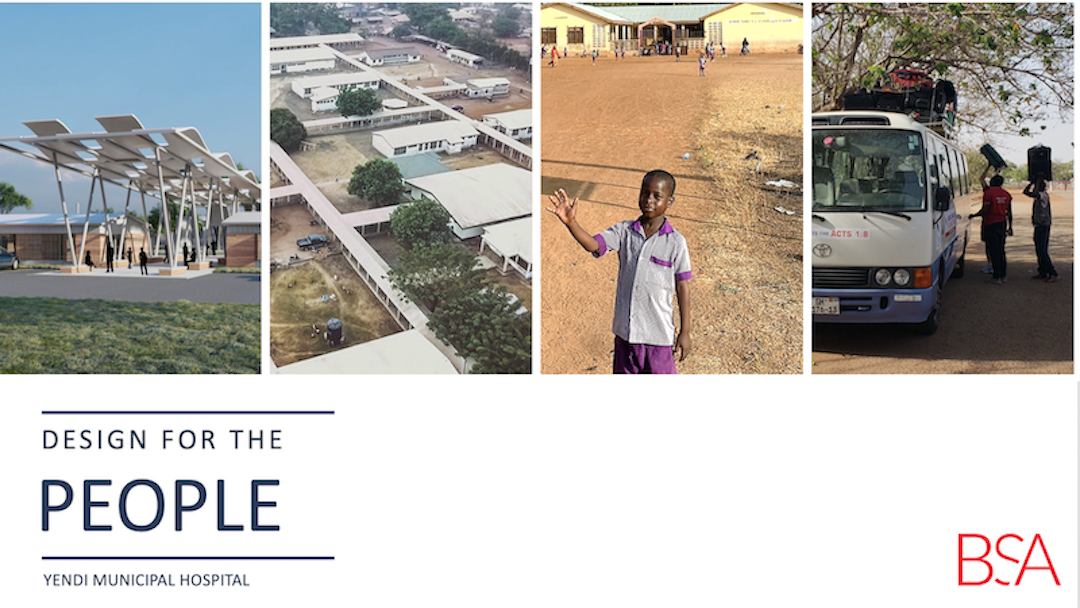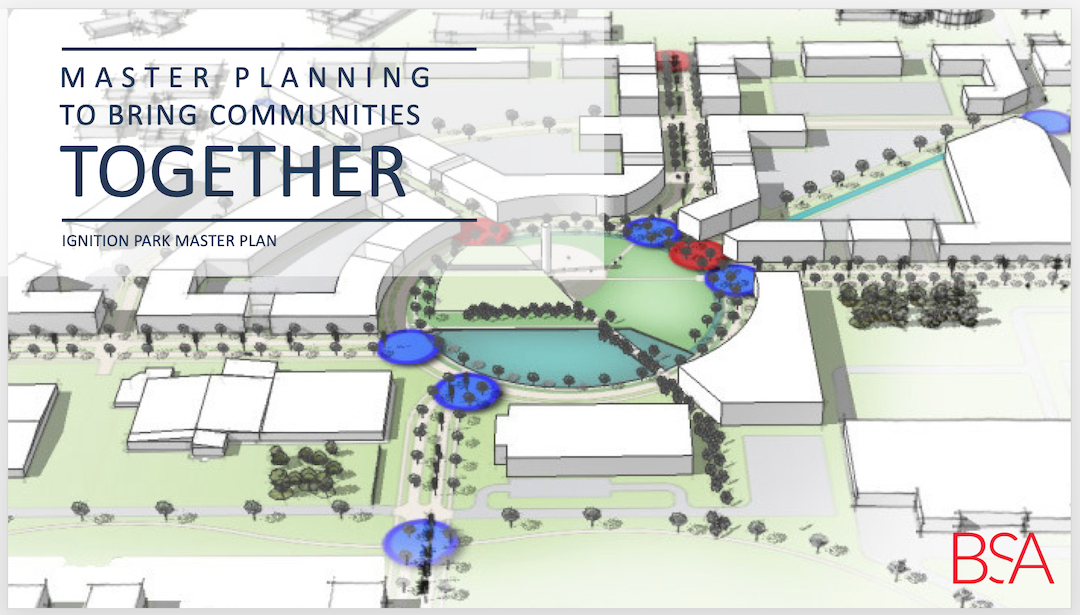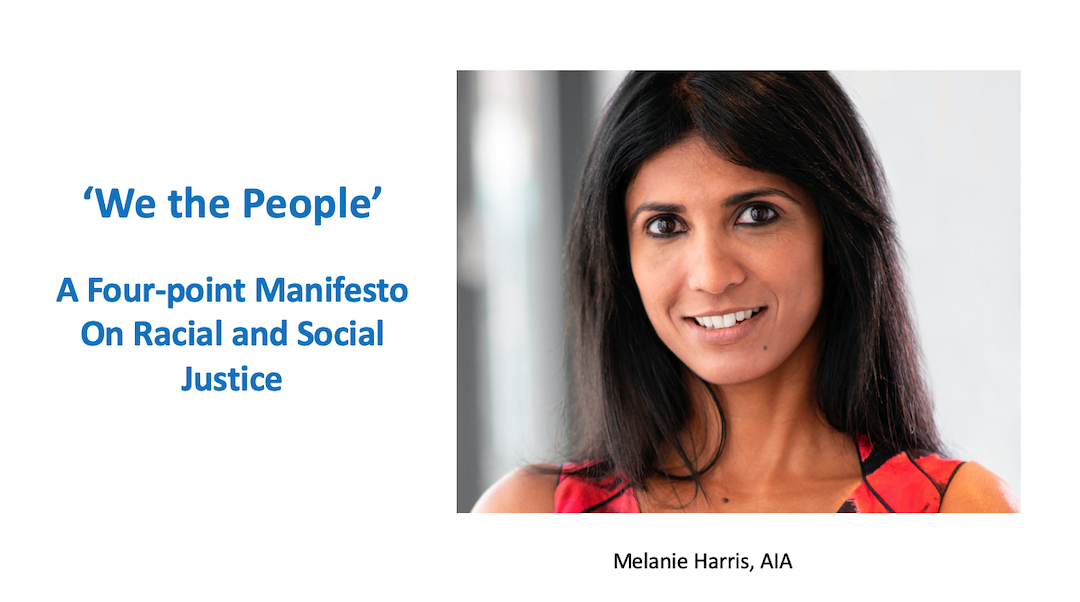I am an architect. I am also a woman of color.
As a brown woman, and now a citizen who emigrated to the United States from India 17 years ago, the recent unrest in our country following the death of George Floyd has made me pause and think about the role of architecture and architects in building a world that not only encourages but demands equity through design.
I was reminded of that day almost two decades ago when I made the 9,000-mile journey from my home in Thiruvananthapuram, the capital of the southwestern state of Kerala, to San Francisco with my younger sister in tow. My mother, who had always been my biggest champion, passed away when I was 15; my father – recently retired from the Indian army – had remarried and was living in San Francisco with my new stepmother and stepsiblings.
As a 19-year-old in charge of a 14-year-old, travelling across continents, I was anxious about all the layovers and connections I had to make, nervous about misplacing the $100 bill my father had entrusted me with, afraid of ordering the wrong meals and drinks on the flight, curious about my new family, but most of all excited about new beginnings. I didn’t stop to consider things like my accent, the color of my skin, the way that I pronounced certain words (my Vs have always sounded like Ws), and my minimal knowledge of American culture.
'I HAD OPPORTUNITIES, AN EDUCATION, A CAREER'
I have been fortunate, even with my differences, to avoid the depth of discrimination so many in this country face. I had opportunities that not everyone does. My parents worked hard to make sure we had comfortable lives and were able to pay for college, even if it meant we had to work hard for scholarships and supplement their contributions with employment while we attended school. Having studied English in schools in India, my transition into American life was smoother than for many who immigrate to this country. I had an education that led me toward a career in architecture, one that is fulfilling and allows great vertical growth. Not everyone is as fortunate.
Even with all the benefits I had, I continued to confront and stand up against the multitude of insidious forms of discrimination – in India and here in the U.S. In India where fairer complexioned women are sought out for marriage, it was the color of my skin. Being naturally darker in complexion, I can still remember the snide comments comparing me to my fairer sister. In India, my independence as a woman was seen as an affront to the patriarchal system that still rears its ugly head. In the U.S., I initially ignored the seemingly small but telling instances of sexism and ageism, later vowing to stand up against it. But I never experienced racism.
As we speak of the systemic racism against minorities in our country, let us consider the true meaning of humanity: our ability to love, show compassion, and use creativity to advance the human race. Every one of us can express this humanity in many different ways. I express mine through my profession.
ARCHITECTURE AS 'A PLACE OF HUMANITY'
Throughout history, the one thing architecture has always represented is a place of humanity. Architects and engineers are tasked with designing spaces that in the very root of their existence strive to provide for those in need of comfort, respite, healing, faith, and justice.
Too often, the true essence of design gets lost or ignored in the milieu. In many communities, disenfranchised people of color are the least served, be it in adequate healthcare facilities and services, housing that they can afford, or educational opportunities. It is time for us to fight for equity.
The profession of architecture uses data, statistics, and information, translating these factors into a creative, visual homage to life on earth. Our profession also takes the basic psychological and safety components of Maslow’s hierarchy – shelter, personal security, resources, and health – and transforms them into love and belonging, esteem, and ultimately self-actualization.
When we deprive people of their basest needs, we are wrenching away their hopes of achieving all the higher needs. Without the feeling of belonging, esteem, and the drive to become our best selves, we can become consumed by an eternal cycle of disenfranchisement and dissolution.
'WE MUST USE OUR VOICES TO EDUCATE AND ADVOCATE'
As architects, we must use our voices to educate, advocate, and demand a say in the future of our world. We are leaving legacies that define a narrative too important to ignore. The buildings we design become vessels of a collective consciousness.
To see architecture in the sum of its parts is paramount. Here’s how we can do that:
1. DESIGN FOR THE PEOPLE
We have been taught to design to the context, a varied array of constraints, and to the site. But let us also start designing to those who use the space. For example, in certain economically impoverished areas, it is important to provide larger waiting areas in clinics than is the industry standard. This allows larger families with siblings and grandparents to attend appointments with the primary patient when childcare is too expensive or not available.
Understanding the people who use the space and the way the space will be used has such value in design, yet it is often overlooked for aesthetics, budget constraints, or schedule demands.

2. EMPOWER THE PEOPLE
We must inspire neighborhoods to take pride in improving their quality of life. Instead of allowing gentrification that forces out a community’s indigenous residents, we must add resources that allow them to invest in the future of their neighbors and their community.
Programs such as urban farms operated and used by the community, sustainable initiatives providing green energy sources at a discount, increased access to education specific to preventive healthcare and well-being, and community art and upgrade programs allowing neighbors to define their surroundings are all great means to accomplish this. This is how self-worth can be nurtured. Architecture is one important tool that can help accomplish this.

3. STAY INVESTED IN THE COMMUNITY
More often than not, architects and designers are removed from the job once the project is complete and occupied. Like doctors’ follow-up visits, we should endeavor to conduct post-occupancy evaluations – particularly in impoverished neighborhoods and on projects that deeply affect the community, such as clinics, hospitals, schools, and housing – and take any necessary corrective action to make sure our buildings serve all the people for whom they were designed, not just owners or clients.

4. STRIVE FOR INCLUSION
We must locate and design accessible public spaces for people of all races and economic standings. Instead of using parks and plazas as a tool to separate, we must see these as opportunities to engage and integrate. Design has the power to address concerns regarding safety and security. We must not allow these concerns to prevent us from doing what is right.
It is our responsibility as architects to empower neighborhoods, those we live in and those we touch through our work. Imagine the collective power of a group that weaves a community’s and a nation’s urban fabric. Let’s understand the importance of established minority neighborhoods. Let’s learn how to work with the local community by providing the proper resources and support to enhance a community and meet its needs. Let’s help every human being achieve his or her best self.

I cannot wait for the day when, regardless of race, sex, gender, or economic status, we all have equal rights to safety, security, a sense of belonging, and self-value. The very first words of our Constitution are “We the People of the United States.” Our country cannot move forward until there is equity for all of its citizens. At the very foundation of our democracy is the right to shape our future for the betterment of all the people. As leaders in the building industry, we have a professional and moral obligation to use our skills and training to achieve this goal, now more than ever.
ABOUT THE AUTHOR: MELANIE HARRIS, AIA
Melanie Harris, AIA (mharris@bsalifestructures.com), is the National Healing Practice Director for BSA LifeStructures, a full-service architecture and engineering firm. She is a graduate of Texas A&M University and when not in Tampa, she travels the world in search of new experiences, unique foods, and architecture.
Related Stories
K-12 Schools | Feb 18, 2023
Atlanta suburb opens $85 million serpentine-shaped high school designed by Perkins&Will
In Ellenwood, Ga., a southeast suburb of Atlanta, Perkins and Will has partnered with Clayton County Public Schools and MEJA Construction to create a $85 million secondary school. Morrow High School, which opened in fall 2022, serves more than 2,200 students in Clayton County, a community with students from over 30 countries.
Museums | Feb 17, 2023
First Americans Museum uses design metaphors of natural elements to honor native worldview
First Americans Museum (FAM) in Oklahoma City honors the 39 tribes in Oklahoma today, reflecting their history through design metaphors of nature’s elements of earth, wind, water, and fire. The design concept includes multiple circles suggested by arcs, reflecting the native tradition of a circular worldview that encompasses the cycle of life, the seasons, and the rotation of the earth.
Architects | Feb 17, 2023
Architect of the Capitol fired by President Biden after strong bipartisan criticism
Architect of the Capitol J. Brett Blanton was let go this week following alleged abuse of authority, misuse of government property, and wasted taxpayer money.
High-rise Construction | Feb 15, 2023
Bjarke Ingels' 'leaning towers' concept wins Qianhai Prisma Towers design competition
A pair of sloped high-rises—a 300-meter residential tower and a 250-meter office tower—highlight the Qianhai Prisma Towers development in Qianhai, Shenzhen, China. BIG recently won the design competition for the project.
Senior Living Design | Feb 15, 2023
Passive House affordable senior housing project opens in Boston
Work on Phase Three C of The Anne M. Lynch Homes at Old Colony, a 55-apartment midrise building in Boston that stands out for its use of Passive House design principles, was recently completed. Designed by The Architectural Team (TAT), the four-story structure was informed throughout by Passive House principles and standards.
Designers | Feb 13, 2023
Hoffmann Architects + Engineers Establishes Diversity Advancement Scholarship Fund
Hoffmann Architects + Engineers, a design firm specializing in the rehabilitation of building exteriors, contributed $25,000 to fund the Hoffmann Diversity Advancement Scholarship, administered through the Connecticut Architecture Foundation. The fund provides scholarships for students from underrepresented racial or ethnic groups who are seeking degrees in architecture or engineering.
Office Buildings | Feb 12, 2023
Smyrna Ready Mix’s new office HQ mimics the patterns in the company’s onsite stone quarry
Designed by EOA Architects to showcase various concrete processes and applications, Smyrna Ready Mix's new office headquarters features vertical layering that mimics the patterns in the company’s stone quarry, located on the opposite end of the campus site. The building’s glass and concrete bands are meant to mirror the quarry’s natural contours and striations.
Multifamily Housing | Feb 11, 2023
8 Gold and Platinum multifamily projects from the NAHB's BALA Awards
This year's top BALA multifamily winners showcase leading design trends, judged by eight industry professionals from across the country.
Multifamily Housing | Feb 10, 2023
Dallas to get a 19-story, 351-unit residential high-rise
In Dallas, work has begun on a new multifamily high-rise called The Oliver. The 19-story, 351-unit apartment building will be located within The Central, a 27-acre mixed-use development near the Knox/Henderson neighborhood north of downtown Dallas.
Sustainability | Feb 9, 2023
New guide for planning, designing, and operating onsite water reuse systems
The Pacific Institute, a global nonpartisan water think tank, has released guidance for developers to plan, design, and operate onsite water reuse systems. The Guide for Developing Onsite Water Systems to Support Regional Water Resilience advances circular, localized approaches to managing water that reduce a site’s water footprint, improve its resilience to water shortage or other disruptions, and provide benefits for local communities and regional water systems.

















